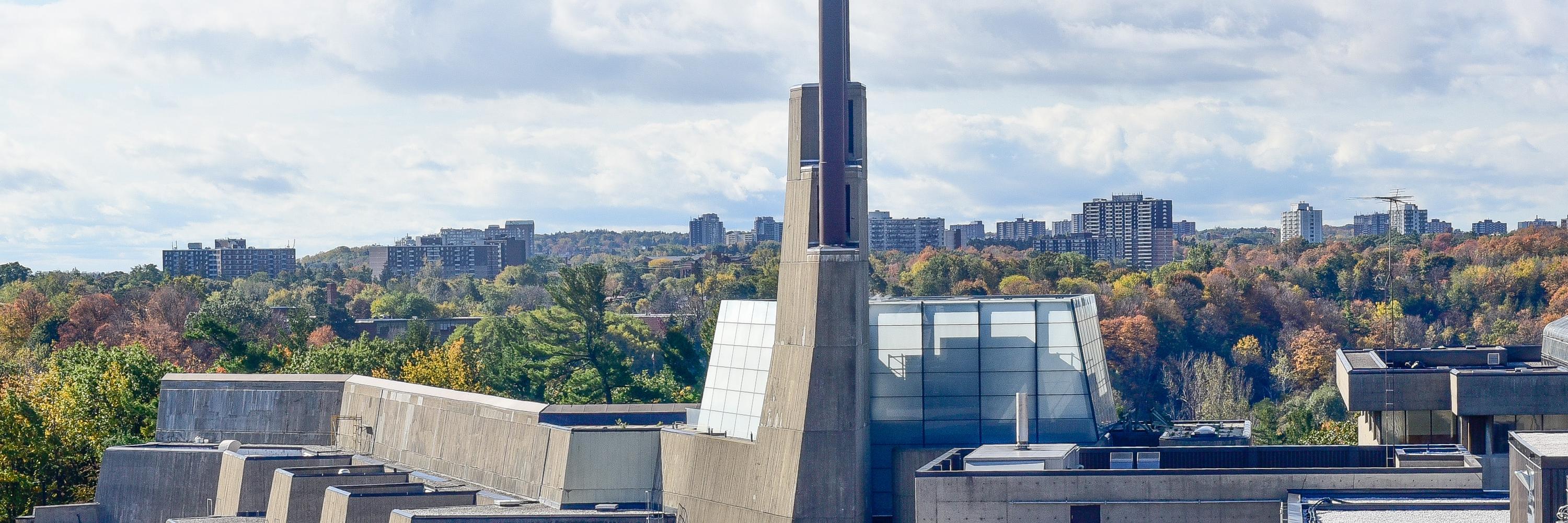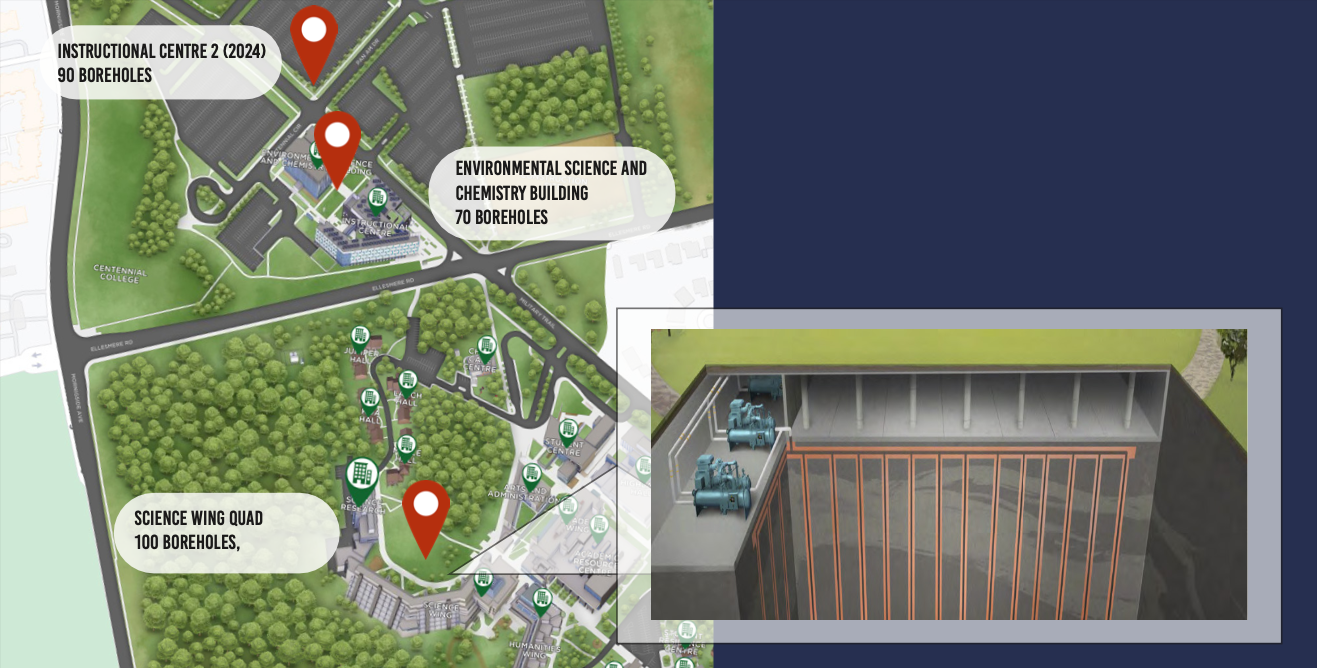Heating and cooling is the main challenge facing U of T Scarborough's efforts to achieve a net zero campus. Our HVAC system is powered by burning natural gas, a process responsible for 85% of the campus' carbon emissions. By making our HVAC system greener and more efficient, and utilizing new technologies such as geo-exchange and passive house, the facilities management team is dedicated to reducing our energy demands according to University of Toronto's Low-Carbon Action Plan.
Read on to learn more about HVAC, Geo-Exchange, Earth Tubes and Passive House.

Heating, Ventilation, and Air Conditioning (HVAC)

UTSC was built in the 1960s, at a time when boilers, chillers and air exchanges were not built for efficiency. Many of these original systems remain, complicating efforts to reduce our natural gas use by making upgrades.
UTSC has recently upgraded our boiler system. The original boilers were powered by burning natural gas to heat water into steam, which was then distributed through the HVAC system to heat the buildings. Our new boilers run on hot water alone, making them more efficient by avoiding the energy loss generated by creating steam and reducing our natural gas usage.
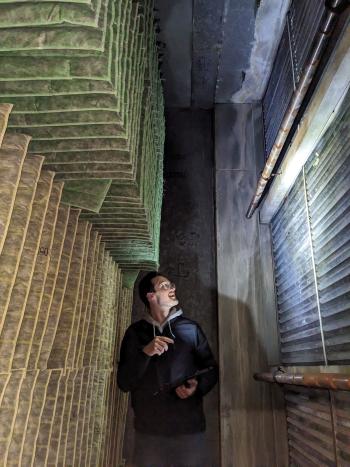
Other recent upgrades include a condensing economizer, which captures the excess heat created by our HVAC system and reuses it to heat our boilers. Our chillers, which are some of the oldest pieces of equipment remaining on campus, are scheduled for replacement in 2026.
Replacing these systems is a long and complicated process, complicated by the fact that all of UTSC’s buildings are constantly in use, making it difficult to shut down systems to upgrade them. Any changes are the result of months of planning and collaboration between UTSC facilities staff, engineers, trades and external contractors.
By far the biggest complicating factor is the age of the existing utilities. Equipment cannot be upgraded all at once, resulting in a mix of existing boilers, chillers and air exchanges that all function differently and are of different ages. Hooking up a new piece of equipment to these old and diverse systems is easier said than done, requiring the expertise and creativity of UTSC’s engineers and external partners.
In an ideal scenario, disruptions are minimal, and the temperature and air quality of the buildings remains constant throughout the process of the upgrades, meaning most campus inhabitants will never even know the upgrades have occurred.

New technology
Geo-Exchange Systems
Beginning in 2014, more than 400 boreholes have been installed across the Toronto Pan Am Sports Centre, the Environmental Sciences Building, and the Science Wing for a ground source heat pump system acting as a heating and cooling storage battery.
These boreholes run 650 feet into the ground, acting as passive heat storage. In the summer, excess heat from buildings can be pumped into the ground and stored until winter, when it is then pumped back into the buildings, reducing the use of natural gas for heating.
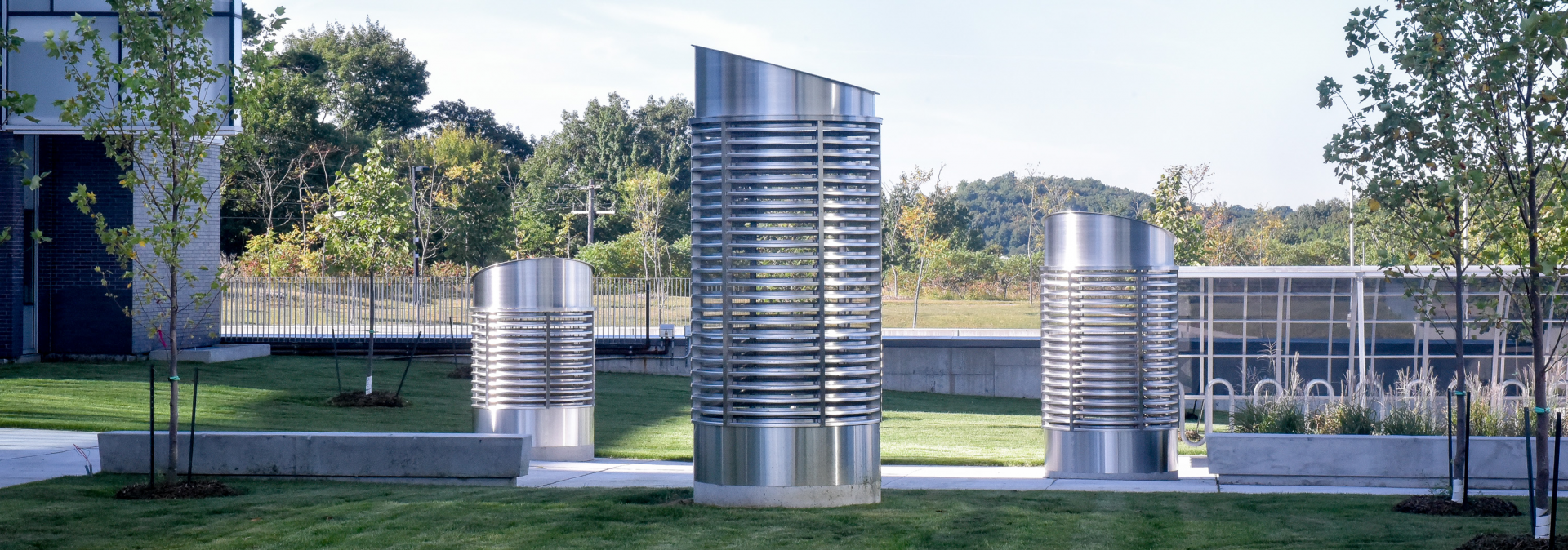
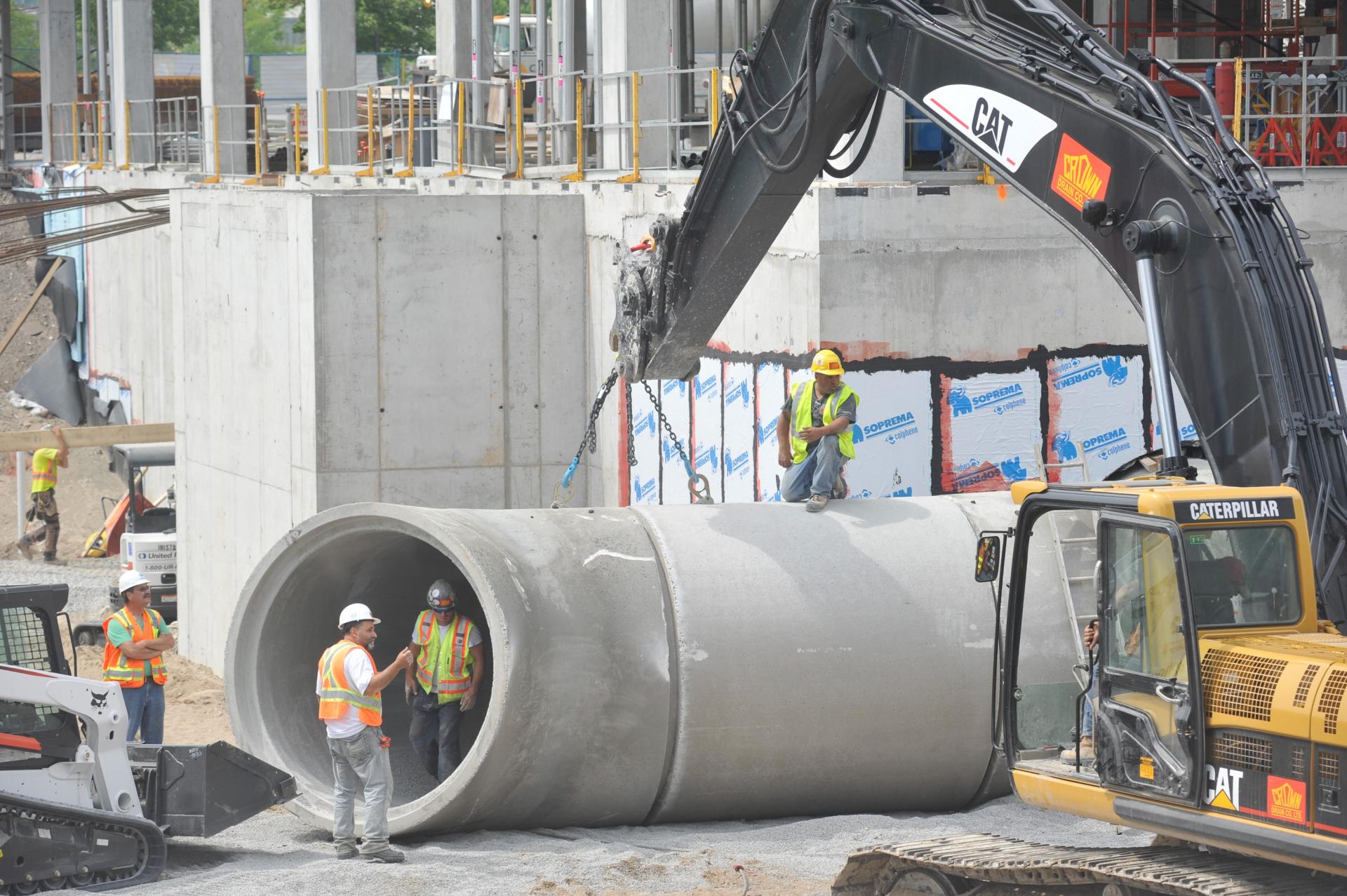
Earth Tubes
The Environmental Science and Chemistry Building at UTSC is home to one of the largest earth tube systems in Canada. The tubes take advantage of the stable temperature of the earth, drawing in air from the surface and sending it underground in massive tubes which modulate its temperature. The air then flows into the building, providing ventilation at a stable ambient temperature for its inhabitants, with less reliance on natural gas.
In a building full of laboratories, sometimes handling toxic materials, the earth tube ventilation system also allows for differential pressurization between the administrative wing and laboratory wing, which is essential for occupant safety.

Construction
All new buildings and major renovations must meet the University of Toronto Tri-Campus Energy Modelling & Utility Performance Standards. The standard ensures that our campus buildings are designed to high standards that define superior performance for energy intensity, carbon intensity, water use and comfort.
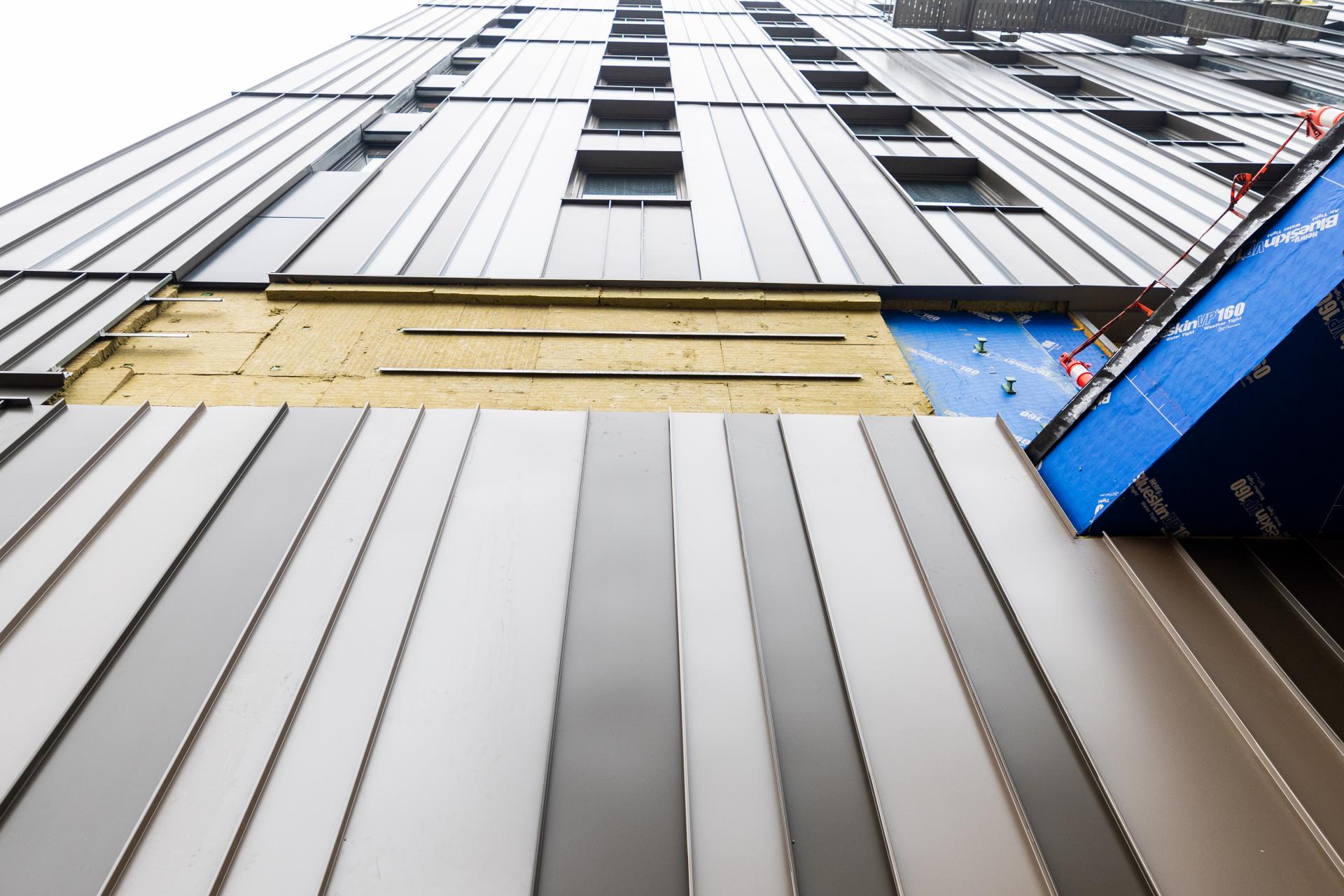
Passive House
In Fall 2023, UTSC opened a new student residence, one of the largest passive house projects in Canada. Passive house is an energy standard where buildings must meet an ambitious energy, heating demand and air tightness requirements and confirm their compliance through whole building testing.
To achieve passive house standards, the student residence has triple glazed windows and a highly insulated and airtight building envelope that minimizes thermal bridging, which are weak points that allow heat to pass through more easily. The mechanical systems are designed to capture and re-use heat generated in the building—from cooking, clothes dryers, even body heat. The result is a building that is well-ventilated and comfortable for building occupants, all while keeping the total energy needed for heating and cooling extremely low.
